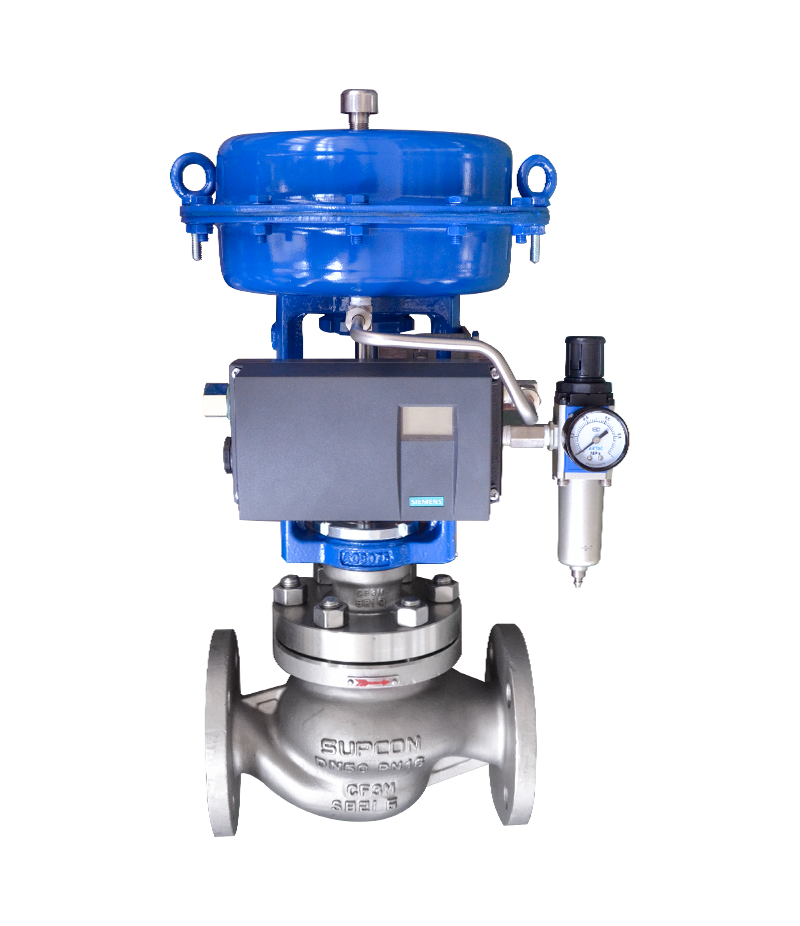May. 18, 2020
1. Flashing phenomenon:
Flash evaporation is when the high-pressure saturated water enters a relatively low-pressure container, and the sudden decrease in pressure makes the saturated water part of the saturated steam and saturated water under the pressure of the container.
Reasons for formation:
When water is heated at atmospheric pressure, 100 ° C is the maximum temperature allowed for liquid water at that pressure. Reheating cannot increase the temperature of the water, but can only convert the water into steam. The heat absorbed by water before it reaches the boiling point is called " sensible heat" or saturated water. The heat required to convert saturated water into steam at the same atmospheric pressure is called " latent heat" However, if the water is heated under a certain pressure, the boiling point of the water is higher than 100 ° C, so more sensible heat is required. The higher the pressure, the higher the boiling point of water, and the higher the heat content. When the pressure drops, part of the sensible heat is released, and this excess heat will be absorbed in the form of latent heat, causing part of the water to be "flashed" into steam.
The actual situation:
Flashing occurs in the pipeline system, which is easy to cause cavitation damage to the valve. You can choose the anti-cavitation high-pressure valve, which is characterized by multiple throttling to share the pressure difference, and you can also choose cavitation-resistant scouring materials.
Flash evaporation can also be used as an energy source in the recovery of boiler drain water in thermal power plants and geothermal power generation.
Cavitation and flashing are a kind of hydraulic flow phenomenon. This phenomenon can not only reduce the flow capacity Kv of the regulating valve but also produce noise, vibration, and damage to the material. Therefore, controlling and reducing the influence of cavitation and flashing on the regulating valve is one of the issues to be considered when designing the globe control valve.
2 Cavitation and flash evaporation
The conditions for cavitation and flash evaporation are different. Flash evaporation is a very fast transition process. Flash evaporation occurs when the downstream pressure of the flowing liquid is lower than its saturation pressure, so it is a systematic phenomenon. The regulating valve can avoid the occurrence of flash vaporization unless the system conditions change. When the downstream pressure of the liquid in the valve rises back and is higher than the saturation pressure, cavitation will occur. In the process of cavitation, saturated bubbles no longer exist, but quickly blast and return to a liquid state. Because the volume of bubbles is mostly larger than the liquid of the same form. Therefore, the bursting of bubbles is a transition from a large volume to a small volume. Cavitation is a transition process from liquid → saturation → liquid, which is different from flash evaporation. Correctly and rationally designing the regulating valve can avoid the occurrence of cavitation.
3 Valve design to prevent flash evaporation
It is impossible to prevent flash evaporation in the control valve. All that can be done is to prevent the destruction of flash evaporation. In the design of the regulating valve, the factors that affect the flashing damage mainly include the valve structure, material performance, and system design.
Flash evaporation damage is caused by high-speed saturated bubbles impacting the valve body surface and corroding the valve body surface. Since the medium in the angle valve flows directly to the center of the downstream pipe inside the valve body, instead of directly impacting the body wall like a spherical valve, the number of saturated bubbles that impact the body wall of the valve is greatly reduced. Thereby reducing the destructive power of flash evaporation. Therefore, in the case of flash damage, the angle valve body design is more economical than the spherical valve body. A valve structure with a swing valve disc is also an effective method for preventing flash damage. A swing valve is installed on the downstream side of the valve body. The pressure of the liquid drops below the saturation pressure downstream of the valve body and flashing occurs in the downstream pipeline. In some cases, a method of protecting the valve from flash damage caused by a section of downstream piping is often used.

Single Seat Globe Control Valve
3.2 Material selection
In general, materials with higher hardness are more resistant to flash vaporization and cavitation damage. Therefore, materials with high hardness are often used to manufacture valve bodies. For example, chromium-molybdenum alloy steel valves are often used in the power industry. WC9 is one of the commonly used materials that resist corrosion. If the angle valve is equipped with a pipeline of high hardness material, the valve body can be made of carbon steel, because only the downstream part of the valve body has flash liquid. If a single seat globe control valve is used, it is best to use a chromium-molybdenum alloy steel valve body because flashing occurs inside the valve body.
3.3 System design
The flashing phenomenon is determined by the system design. A system that heats the drain valve to discharge flash water to the condenser. Therefore, the condenser must have a larger volume than the pipeline to prevent high-speed bubbles from hitting the surface of the material. Therefore, good system design can help prevent flash damage.
Headquarter Add.: SUPCON Park, No.309 Liuhe Road, Binjiang District, Hangzhou, 310053, China.
Tel.: +86 571 8111 9774
Fax: +86 571 8111 9737
E-mail: [email protected]
